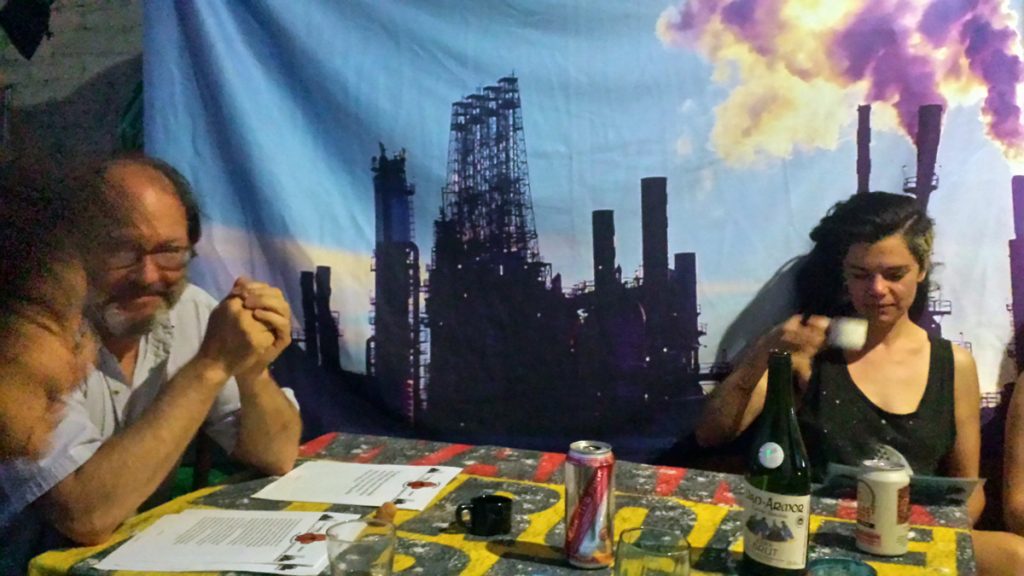
Since our first meeting, our loving material relations project has been caressed by my ten years obsessive thinking and speculation about petroleum infrastructures. In an early group session we even half-jokingly proposed to call a conference “oil is love.”
My dissertation and its allegorical arguments were formally structured analogies to the working operations of an oil refinery. As we have set out to study love, I find the petroleum refinery continues to structure how I am thinking. I find myself making tables and charts of different love processes, practices and discourses. The lists and charts resemble the refinery production flow charts I labored over in writing the dissertation. Some mysterious mystical raw universal love is my new crude. This raw love is everywhere, then different loving processes articulate or refine it into material manifestations, each of these manifestations is like an petroleum product with different effects (uses) and affects.
It doesn’t really work.
But I keep finding myself trying to make it work with my lists and flow charts. Thinking with petroleum refining and with petroleum cannot just be turned off. My attempts to collaborate formally with that which I was studying may have changed how I figure things out. Or in other words my work attempting to figure out petroleum performances shifted how I figure. I hope thinking with love will eventually shift in my thinking ways.
In the dissertation, Petroleum Performances, love, desire and care appear a few times. First, obviously, is to point out how petroleum products and capacitated movements causally capacitate everyday sex and contemporary reproduction. Our sexual lives like the rest of our lives happen inside material relations between humans and petroleums. I also wrote about how infrastructures are often a form of loving care. Made invisible by the grammar of infrastructures, they are subordinated systems designed to support human habitats.
In the dissertation, the more provocative flirting with love and desire is suggesting combustion/metabolism are desire. The chemical reactions called by humans oxidation are an alien desire shared by combustible materials and breathing animals. The chemical predilection to react is an attraction, an affinity to do, desire. Converging desires, loving support of infrastructures and the reacting delight of oxidation are an excessive description of a human-petroleum love affair. Like many love affairs the partners are getting and satisfying different desires from each other, an asymmetrical relation. Is there a divergence of best interests as this love making the atmosphere could be detrimental to humans and their other kin?
In many respects, in my dissertation I argue with Donna Haraway that we are already kin with petroleum or at least ecosexual partners. Or with Bruno Latour and Isabelle Stengers, we have a constitution where petroleum holds and manipulates many votes, a cosmopolitical entanglement where human needs are difficult to decipher from mysterious and ambiguous petroleums’ desires.
Haraway, Donna. “Love in a Time of Extinctions and Terminations: Staying with the Trouble.” Wellek Library Lecture. Critical Theory Institute, University of California, Irvine. May 3 (2011).
Latour, Bruno. “An Attempt at a” Compositionist Manifesto”.” New Literary History 41, no. 3 (2010): 471-490.
Morton, Timothy. Dark ecology: For a logic of future coexistence. Columbia University Press, 2016.
Stengers, Isabelle. “The cosmopolitical proposal.” Making things public: Atmospheres of democracy 994 (2005): 994.
